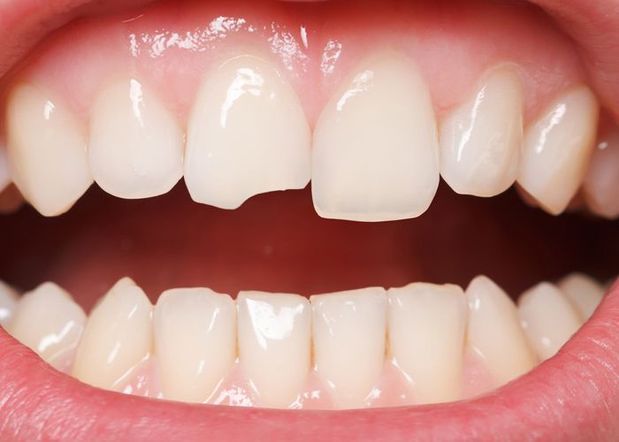Captivating Smiles Start Here
Do you have discoloration or small chips in your smile and want an affordable cosmetic solution? Brown & Baran Family Dentistry has a solution for you! Drs. Paul E. Brown and Christopher S. Baran, our experienced cosmetic dentists, recommend dental bonding as a quick and cost-effective solution to enhance your smile. With dental offices in Seaford and Wilmington, DE, we prioritize your aesthetic goals and offer dental bonding as a versatile option to achieve the beautiful smile you desire.
We welcome patients in Wilmington, Seaford, and the surrounding Delaware areas for quality dental care near them. For a consultation at our Wilmington office, call (302) 999-7600 or reach our Seaford office at (302) 536-7589. Trust Brown & Baran Family Dentistry for high-quality dental care in cosmetic dentistry, where your smile is our top priority.
What Is Dental Bonding?
Dental bonding is an affordable cosmetic dentistry procedure that enhances the appearance of teeth. Our cosmetic dentists apply a tooth-colored composite resin to the tooth’s surface and mold it, achieving the desired shape and color. The durable composite resin mimics the natural look of teeth, making it suitable for both cosmetic enhancements and restorative applications.
The composite resin, composed of plastic and glass materials, offers versatility and comes in various shades to match the natural tooth color. Dental bonding addresses cosmetic concerns such as stains and gaps, as well as restorative needs like repairing chipped or cracked teeth. This minimally invasive technique provides natural-looking results, making it a preferred choice for those seeking aesthetic improvements without extensive dental work.
Advantages of Dental Bonding in Wilmington and Seaford
Dental bonding offers numerous advantages, making it a popular choice for individuals seeking cosmetic enhancements or minor restorative procedures. Understanding these benefits can help you make an informed decision about whether this cosmetic dental treatment is the right option for your dental needs.
- Non-Invasive Nature: One of the primary advantages of dental bonding is its non-invasive nature. Unlike some dental procedures that may require significant enamel removal, bonding typically involves minimal alteration of the natural tooth structure. This makes it a conservative option for improving the appearance of your smile without compromising the integrity of your teeth.
- Cost-Effectiveness: Dental bonding is often a more cost-effective option compared to other cosmetic dentistry procedures, such as porcelain veneers or dental crowns. The materials used in bonding are generally more affordable, making it a budget-friendly choice for individuals looking to enhance their smiles without breaking the bank.
- Quick and Painless Procedure: The dental bonding process is relatively quick and typically painless. In most cases, the procedure can be completed in a single visit to the dentist. The minimal discomfort and immediate results make dental bonding an attractive option for those with busy schedules or those seeking a convenient cosmetic solution.
- Versatility in Cosmetic Enhancements: Dental bonding is a versatile technique that can address various cosmetic concerns. Whether you’re looking to cover up stains, close gaps, or reshape uneven teeth, the customizable nature of bonding allows for precise adjustments to achieve your desired aesthetic outcome.
Candidates for Teeth Bonding
Dental bonding is generally suitable for individuals with:
- Minor cosmetic concerns, such as small chips, cracks, or discoloration
- Good oral health with minimal decay or gum disease
- Sufficient tooth enamel for bonding material adhesion
- Smoking cessation before treatment
- Realistic expectations regarding the outcomes of the procedure

The Dental Bonding Procedure Process at Brown and Baran Family Dentistry
The dental bonding process at our Wilmington or Seaford offices involves several steps to transform your smile and address cosmetic or minor restorative concerns. Understanding each stage of the procedure can help you feel more confident about what to expect during your dental bonding appointment.
Initial Consultation
The process typically begins with an initial consultation with one of our dentists near you. During this appointment, you’ll discuss your cosmetic goals, and one of our Delaware dentists will evaluate your oral health to determine if dental bonding is the appropriate solution for your needs.
Teeth Whitening Consideration Near You
If you plan to undergo teeth whitening treatment, it’s important to do so before dental bonding so that the composite resin can be matched to your newly whitened smile. Your doctor will select a shade of resin that matches your teeth.
Tooth Preparation
If dental bonding is deemed suitable, the dentist will prepare the tooth or teeth by applying a gentle phosphoric acid solution to roughen the surface. This process helps create a suitable texture for the bonding material to adhere to.
Bonding Material Application
Once the tooth is prepared, the dentist applies a tooth-colored composite resin to the surface with a small brush. This resin is carefully selected to match the color of your natural teeth. One of our dentists skillfully sculpts and molds the resin to achieve the desired shape and contour.
Shaping and Sculpting
The dentist shapes and sculpts the bonding material to ensure it blends seamlessly with your natural teeth. This step requires precision to achieve the desired cosmetic outcome and proper functionality.
Curing and Polishing
To harden the bonding material, a special curing light is used. Once cured, Dr. Brown or Dr. Baran further refines the shape and smoothens the surface through polishing. The result is a natural-looking tooth that is both aesthetically pleasing and functional.
Symmetry and Bite Check
Once the treatment is complete, our dentist will measure your teeth to ensure symmetry and check your bite to ensure correct alignment. The entire dental bonding process can be completed in under an hour, depending on the number of teeth being treated.
Aftercare and Maintenance
Proper aftercare and maintenance are crucial for ensuring the longevity and success of dental bonding. You can expect your dental bonds to last up to 10 years with proper care. By following specific guidelines, you can preserve the appearance and functionality of your bonded teeth.
Post-Bonding Instructions
After the procedure, Dr. Brown or Dr. Baran will provide you with post-bonding instructions, which may include:
- Avoid biting hard objects or using your teeth for activities like opening packages.
- Limit consumption of staining substances, such as coffee or red wine, to prevent discoloration.
- Practice good oral hygiene, including regular brushing, flossing, and dental check-ups.
Long-Term Maintenance Tips
To maintain the quality of your dental bonding over the long term, consider the following tips from our cosmetic dentists near you:
- Schedule regular dental check-ups to allow your dentist to monitor the condition of the bonding and address any issues promptly. Regular professional teeth cleanings can help prevent staining and maintain the appearance of your bonded teeth.
- Refrain from habits such as nail-biting or chewing on hard objects to prevent unnecessary stress on the bonded teeth.
- Teeth grinding, or bruxism, can also erode composite resin. If you grind your teeth, get a guard to protect your bonded tooth.
Frequently Asked Questions
When performed by our experienced Delaware dentists, dental bonding typically lasts five to 10 years with proper care. At both our Wilmington and Seaford locations, we use high-quality composite materials and advanced bonding techniques to ensure durability. Our local dental team also provides personalized aftercare instructions to help Delaware patients extend the life of their dental bonding, including recommendations for regular check-ups at our conveniently located offices.
Dental bonding is virtually painless and rarely requires anesthesia unless being used to fill a cavity. At our Wilmington or Seaford dental office near you, we complete most bonding procedures in just 30-60 minutes per tooth, with same-day appointments often available. Our Wilmington and Seaford patients appreciate the convenience of this quick, comfortable cosmetic procedure that delivers immediate results without requiring multiple visits to our New Castle County and Sussex location.
Achieve a Beautiful Smile With Dental Bonding
Are you self-conscious about your smile? Dental bonding may be the solution for you! This simple, painless, and cost-effective procedure can repair chipped, cracked, or stained teeth, as well as reshape and resize them. At Brown & Baran Family Dentistry, our dentists are dedicated to improving the look of your smile.
Call our Wilmington, DE office at (302) 999-7600 or our Seaford, DE practice at (302) 536-7589 to schedule your appointment today. We proudly serve new and returning patients throughout Delaware and its surrounding areas.



